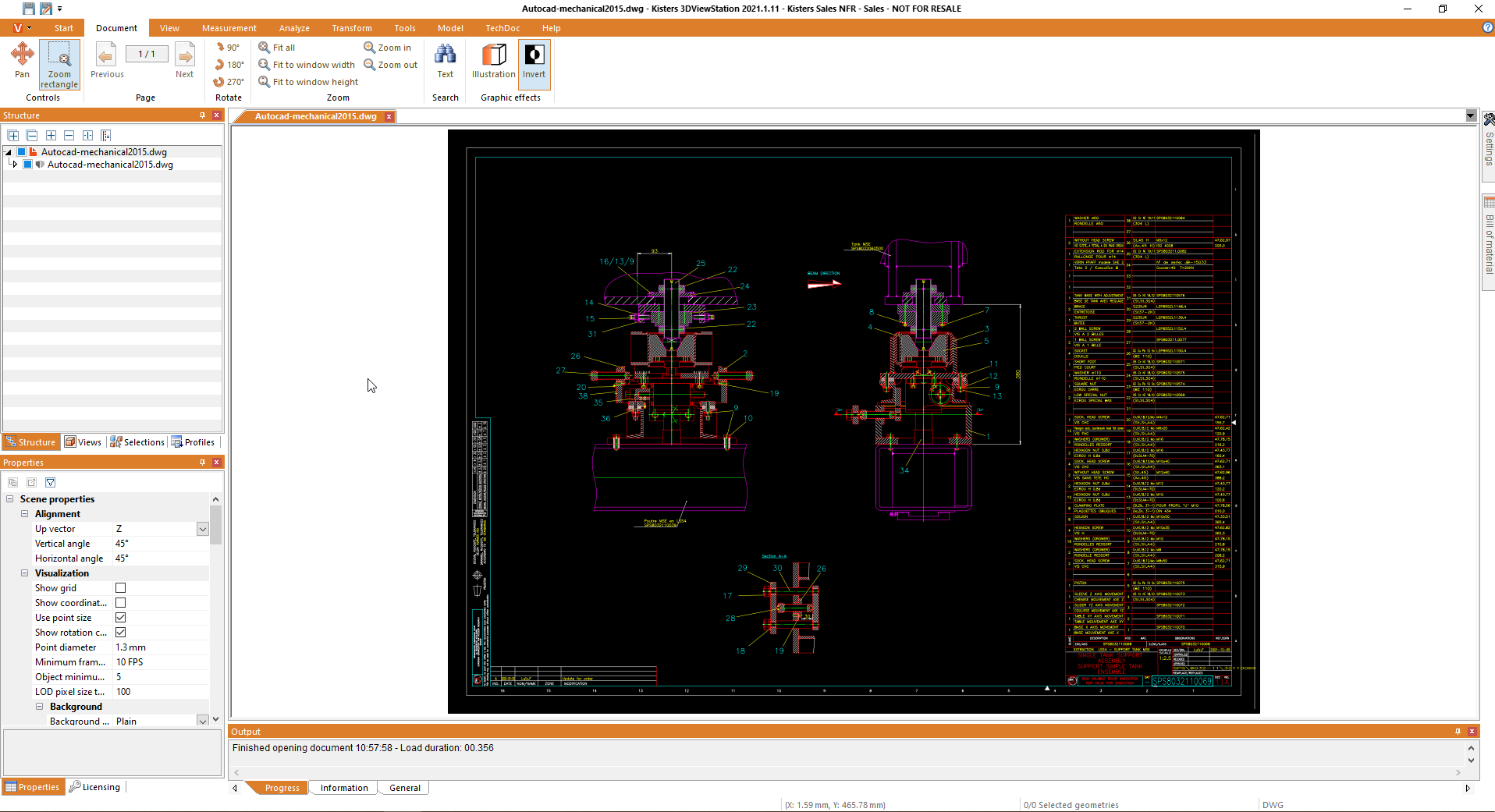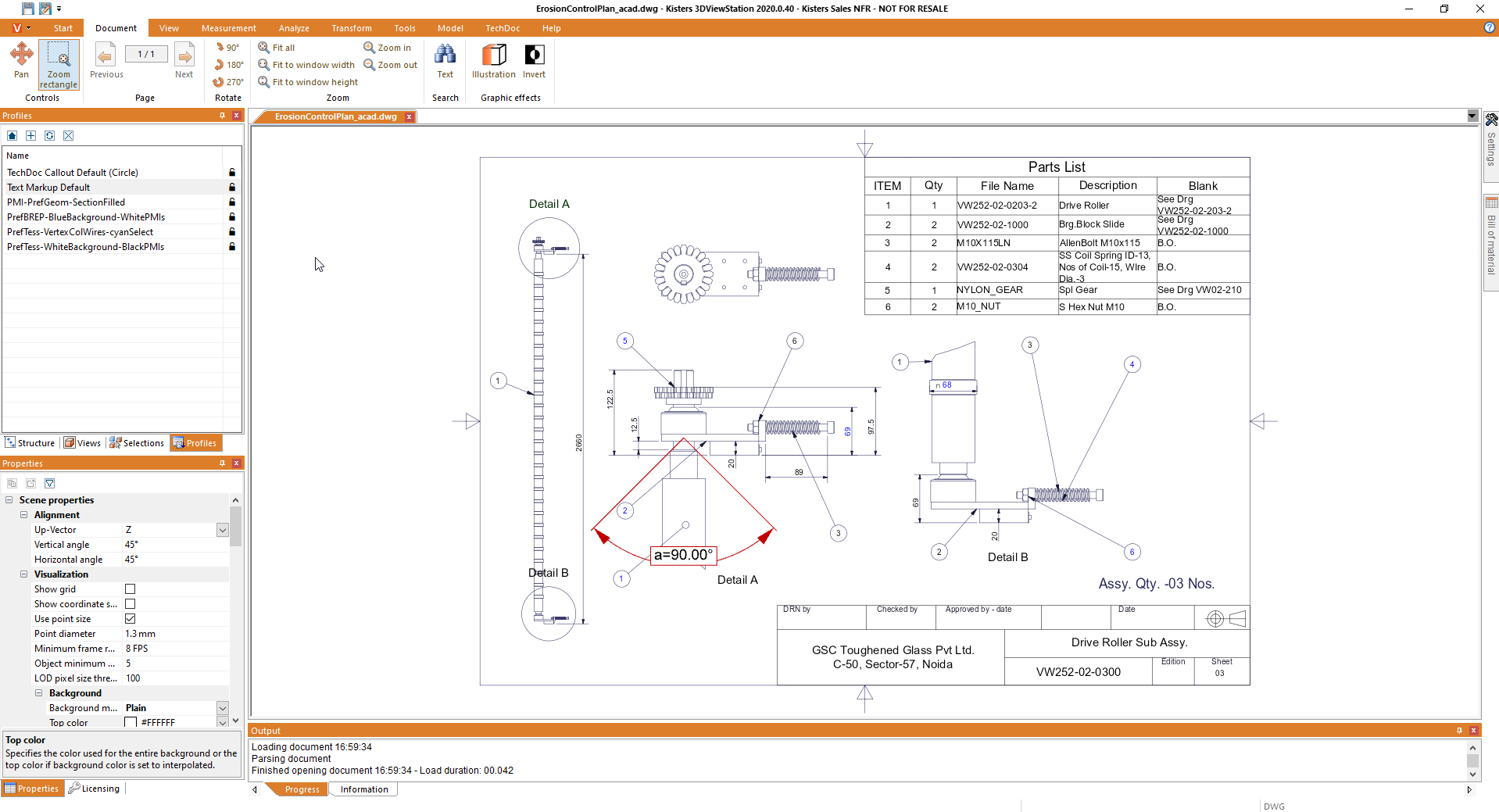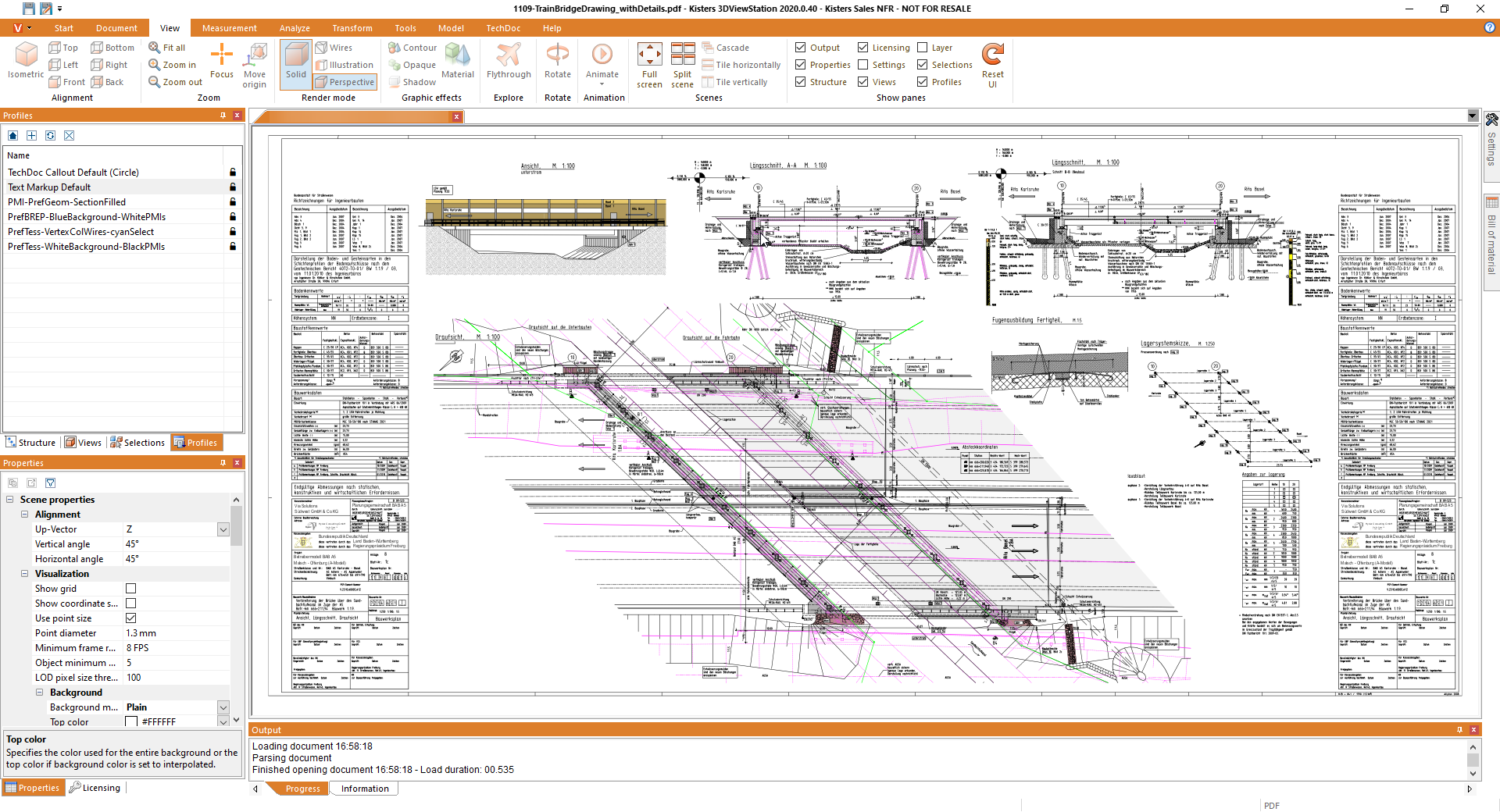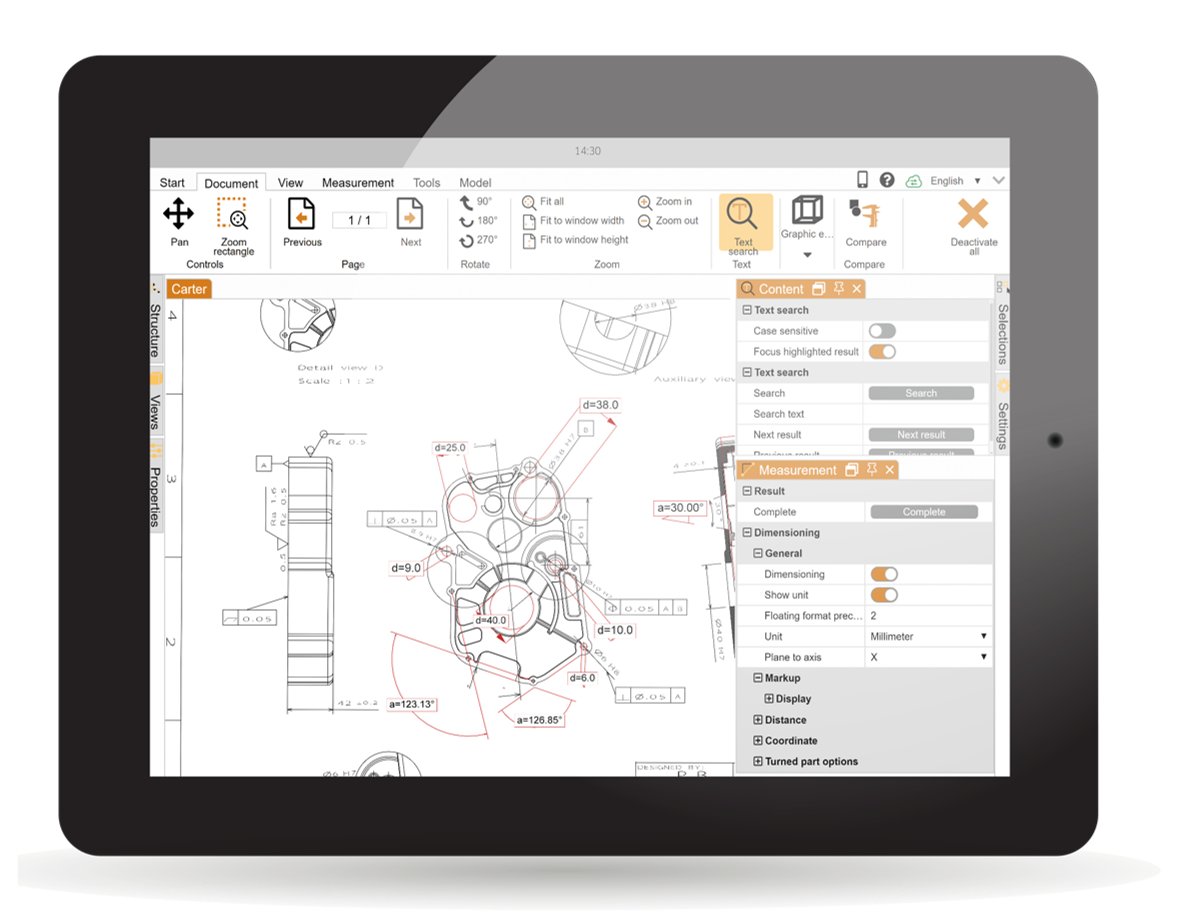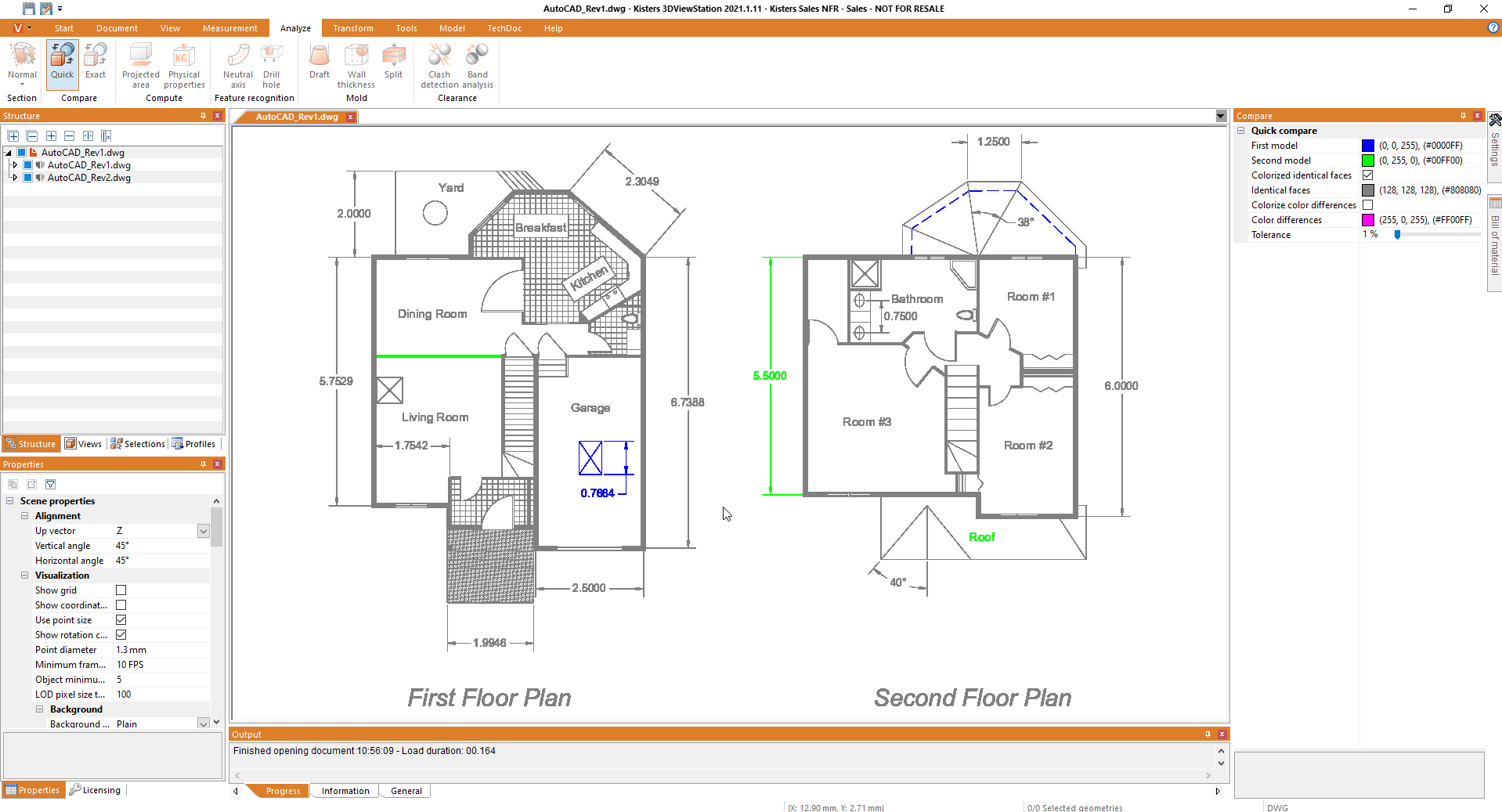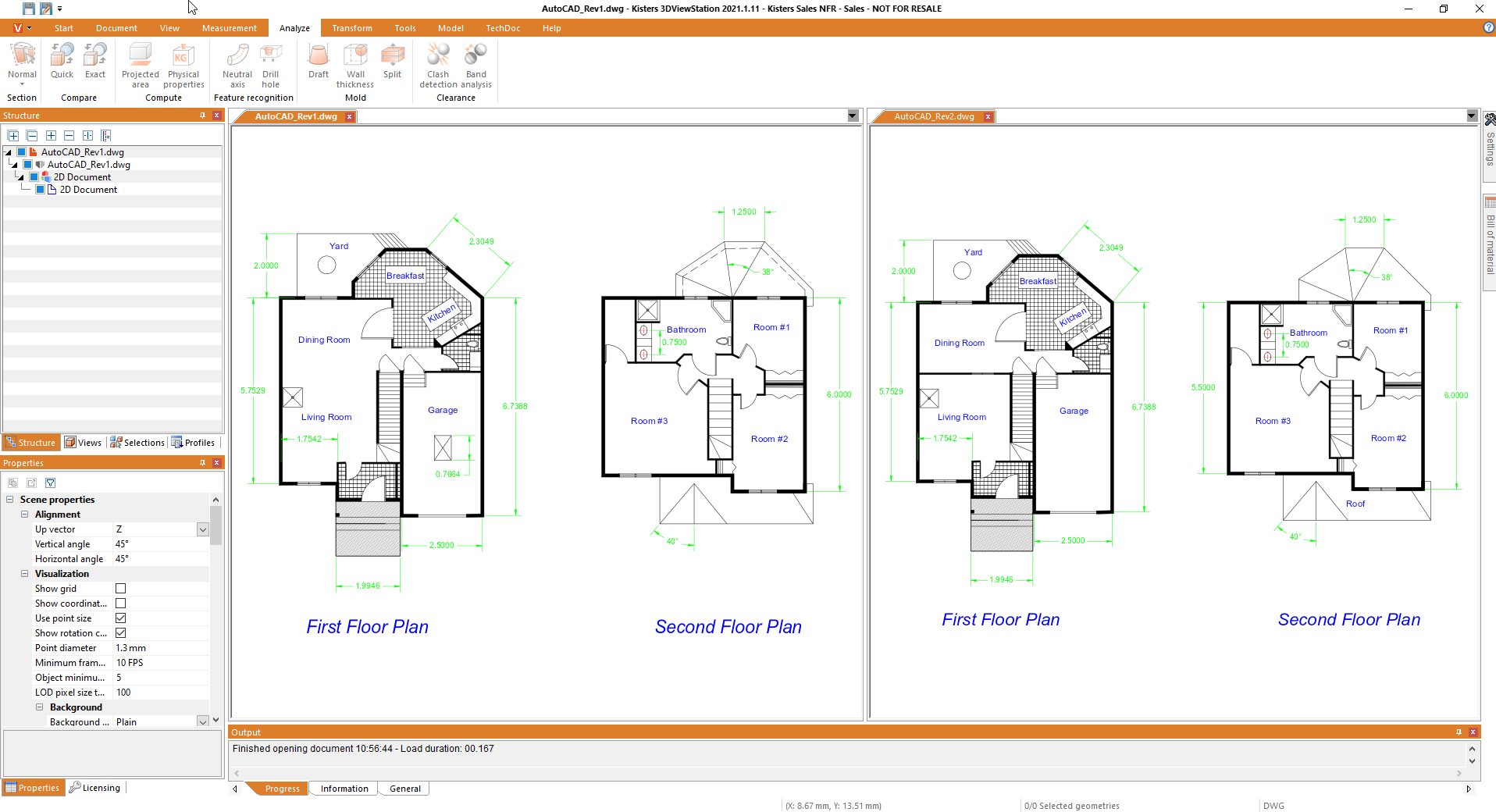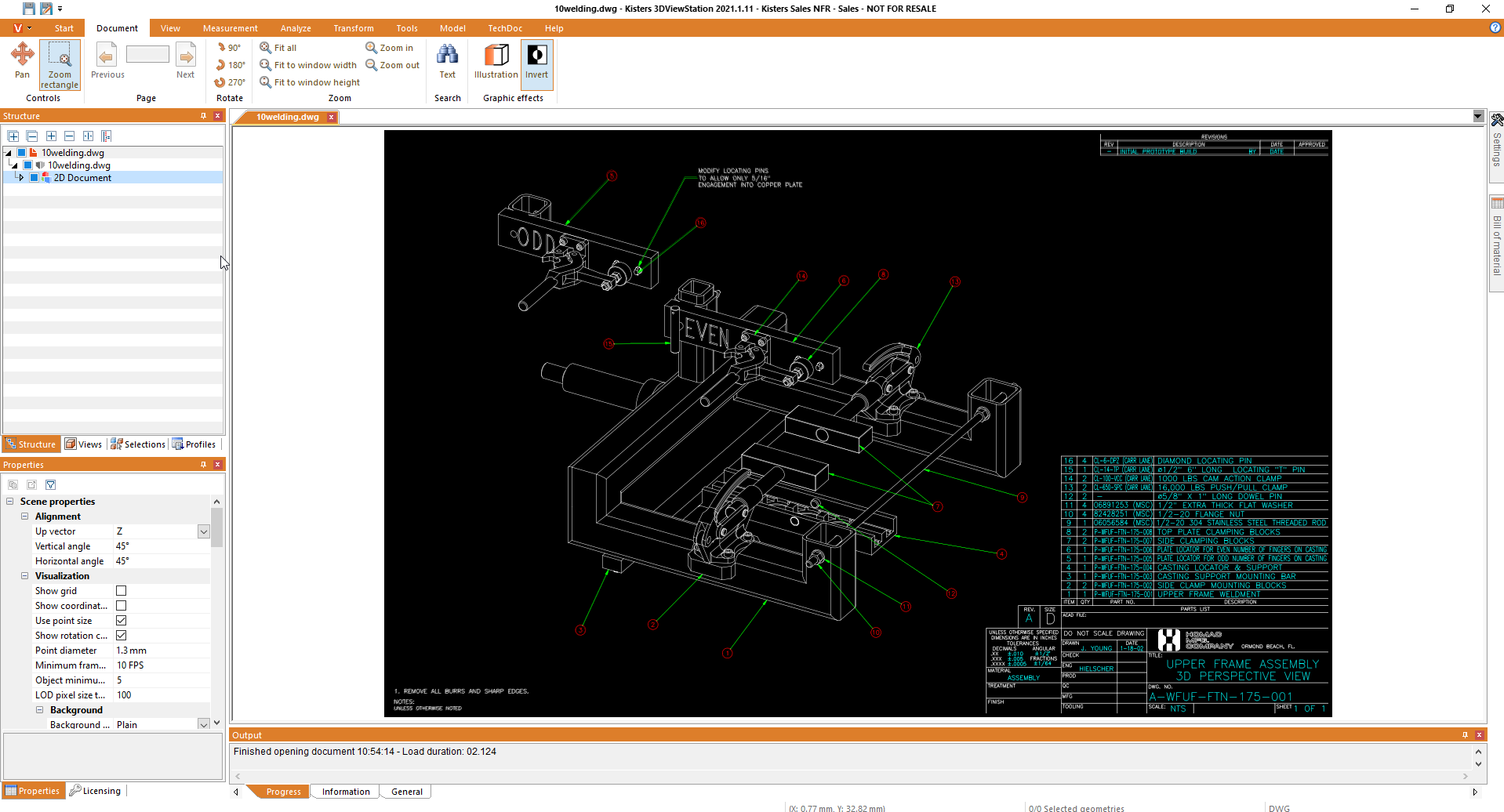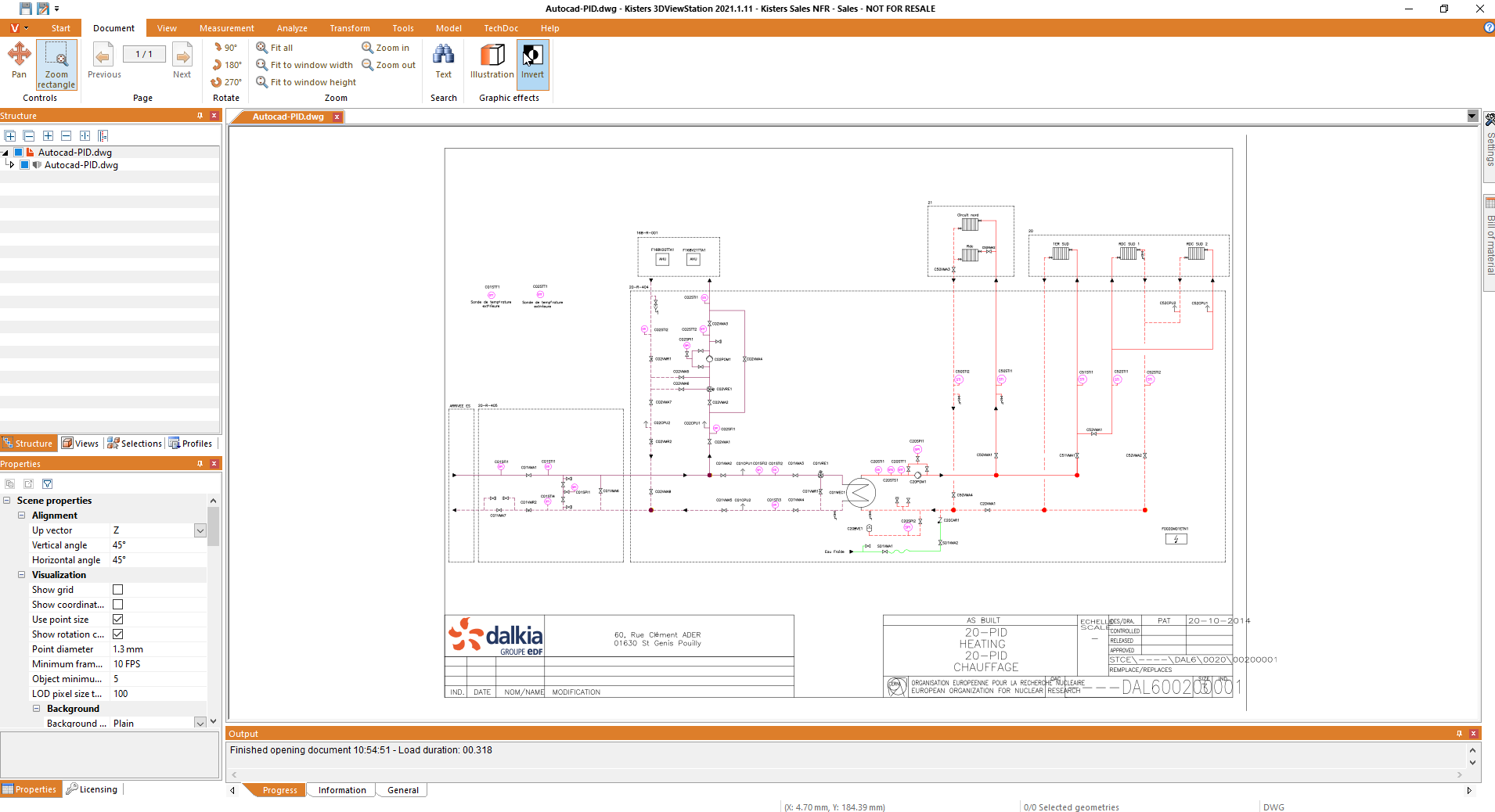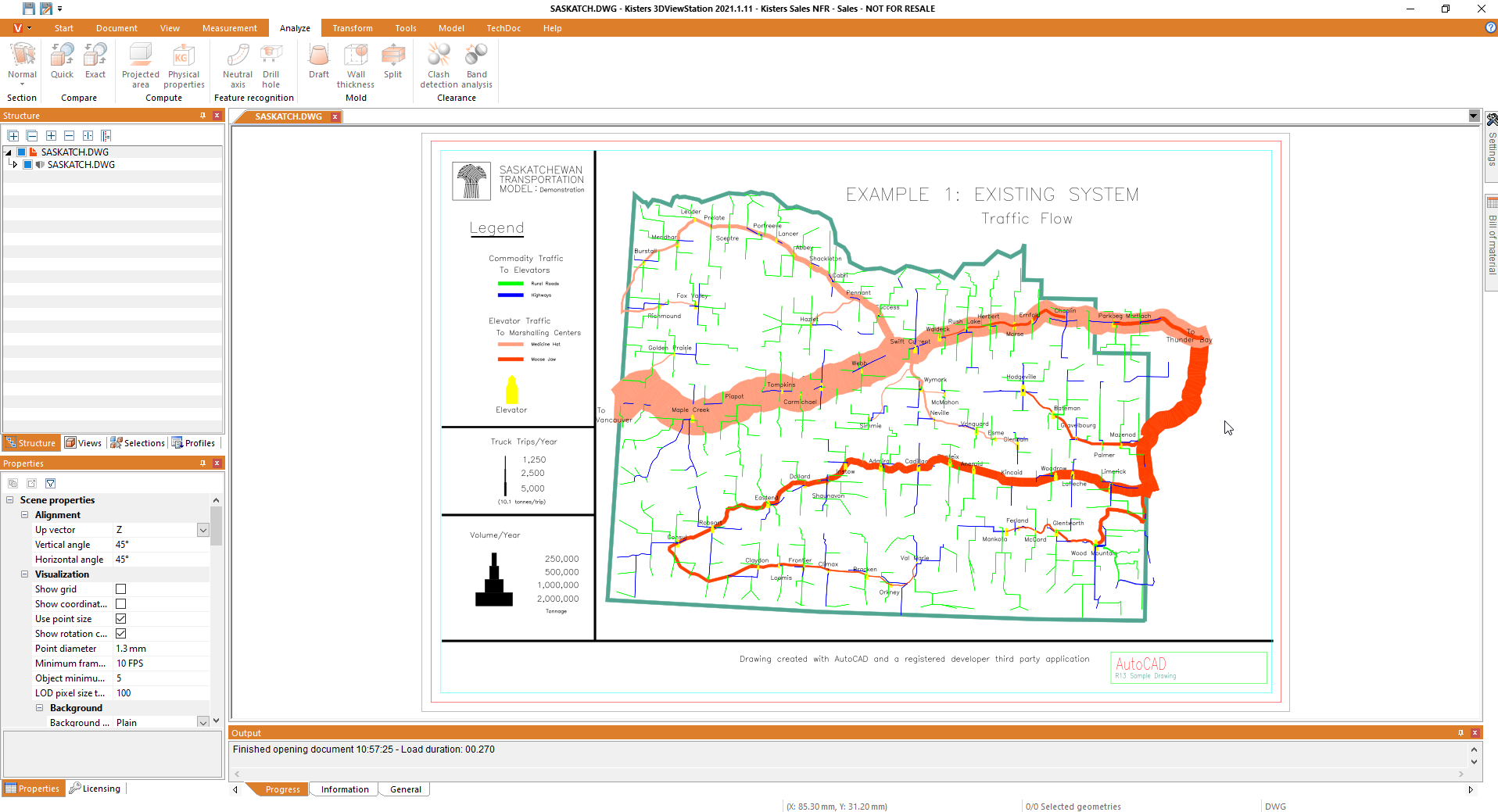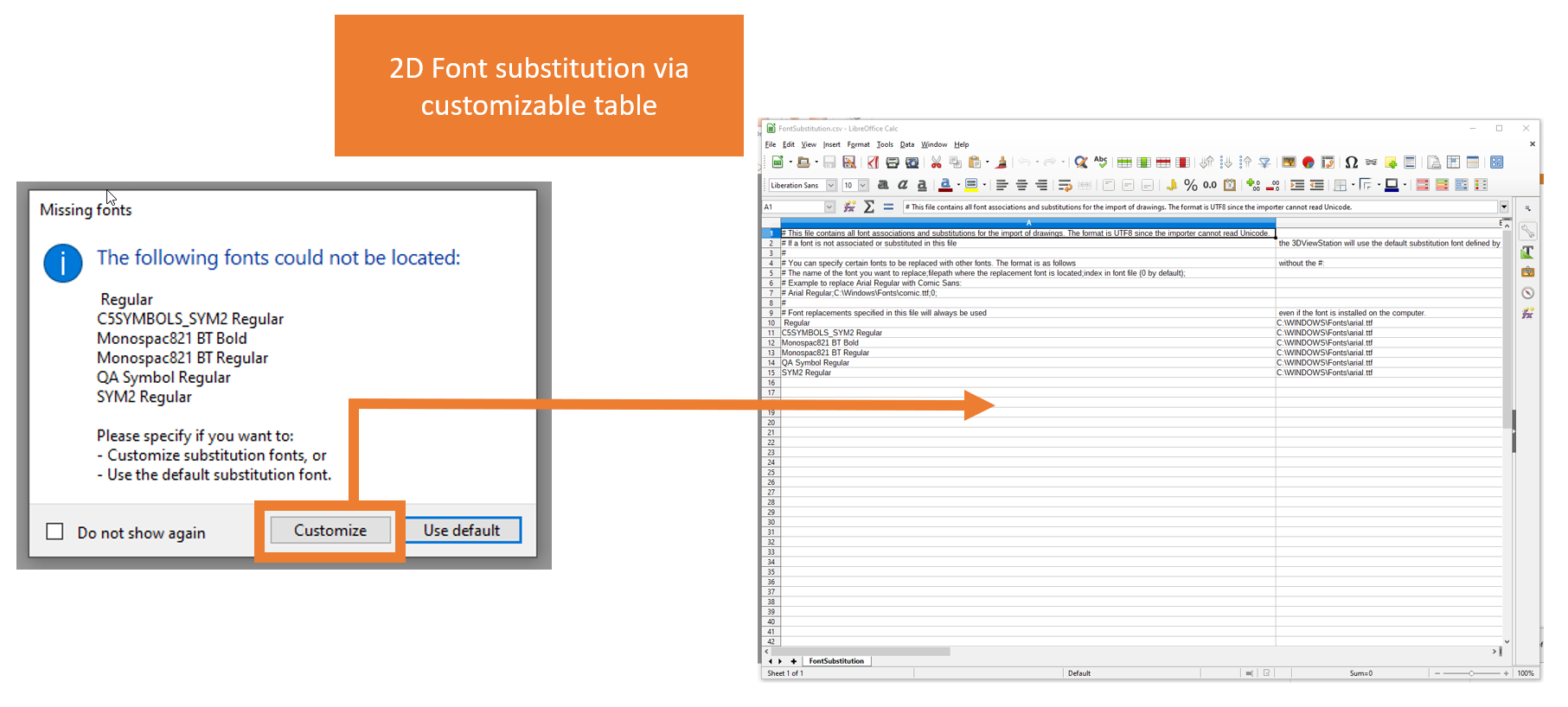DWG viewer and DWG viewer online from Kisters
The 3DViewStation is your all-in-one DWG viewer
Would you like to display DWG files? Then the 3DViewStation is the tool of choice. In addition to DWG and other AutoCAD formats, the 3DViewStation also supports all other common 2D and 3D formats - a total of over 70 different file types. And in contrast to other viewers, such as Autodesk DWG Trueview, the 3DViewStation not only shows the DWG file, but also enables editing and saving, for example to PDF. You can find an overview of all 180 functions here. In addition, the 3DViewStation can be operated easily and intuitively, even without a CAD background. And for international use, the respective national language as well as the country-specific units of length and measurement can even be changed while the program is running.
Your program for all Autodesk and AutoCAD drawings - not just DWG viewers
DWG is an established but proprietary file format from AutoDesk and is the standard format of the AutoCAD CAD program. The abbreviation DWG stands for the English word "Drawing", ie 2D drawing. It is a compact binary format that stores or describes the content of 2D and 3D design data and metadata. The data format is particularly widely used in the fields of construction / architecture and engineering and is also used, for example, for collaboration between architects and engineers. AutoCAD 1.0 was released back in 1982 and was updated frequently as the AutoCAD product evolved.
With the 3DViewStation you can not only display all your DWG files, but also all other AutoCAD formats, such as DXF and DWF. DXF (AutoCAD Drawing Exchange Format) is a format especially for data exchange - and DWF (Design Web Format) is a web format. The 3DViewStation also reads all important (Autodesk) formats, such as Revit and Inventor. No CAD license is required for this.
DWG viewer free, DWG Trueview: use free software - or use AutoCAD right away?
Software in the form of viewers is available for download free of charge to simply display DWG files. For all users who just want to take a look at the DWG drawing, the programs that are available free of charge are perfectly adequate. However, software from this category does not help those who also work with DWG data or who want to convert to another data format. Now you can of course ask yourself: If I'm supposed to pay for a viewer - why not use AutoCAD right away? That's okay, but AutoCAD is complex CAD software with limited interoperability. Not exactly the first choice if you want to open, edit and convert different types of 2D drawings quickly and intuitively.
3DViewStation - more than just DWG view
It is more correct to use software that understands a wide variety of 2D and 3D data formats, offers a wide range of editing functions and is intuitive to use, i.e. a universal viewer: the 3DViewStation. Whether measuring and dimensioning, applying annotations, creating views, comparing drawings, exporting or converting, and, and, and - the 3DViewStation offers you a lot of functionality so that you can reach your goal faster. And the intuitive user interface allows users without CAD knowledge to use the software quickly and safely.
The online viewer tool for all 2D and 3D data - not just DWG
With the 3DViewStation you are also able to view all 2D and 3D files online, i.e. only with a browser. This means that you can open, edit and save your files from a Windows PC, a Mac or an Android mobile phone or an iPhone - that is, from anywhere and completely independent of the platform. A local installation of software is not necessary for this. Simply go to your website, log in if necessary, and get started. Partners, suppliers and customers can also have online access to your data. Don't worry: no 2D or 3D data will be transferred to the end device when opening and editing. Everything stays on the server and is also executed on the server. The external device only takes over the visualization and the operator control. This guarantees maximum security. All you have to do is install the 3DViewStation WebViewer on any server of your choice and you or your company can use the full capabilities of the 3DViewStation online.
Open new DWG versions with the 3DViewStation
Since 1982, not only the AutoCAD software, but also the DWG format has continuously developed and changed. In the course of time, more and more object types have been included in the format and even now the format is still changing at regular intervals with the introduction of new AutoCAD versions. In addition to drawings and 2D / 3D geometry, DWG now also contains information such as BIM data, point clouds, maps, photos and much more.
The constant change process leads to compatibility problems if you want to open a newer DWG file with older software. But even more recent software has difficulties loading current DWG files without errors. Why? Unfortunately, Autodesk keeps a low profile when it comes to the content and structure of DWG files. There is no official description of the format. This has nothing to do primarily with the aspect of security, but much more with the safeguarding of business interests. This should make it difficult for other providers to offer a 100% DWG-compatible interface.
When choosing a viewer, you must also ensure that the import and export interfaces are continuously maintained by the respective viewer manufacturer. With the 3DViewStation, new interfaces are usually updated every 4-6 weeks. This ensures that you can always read in the latest file versions - and this applies to all interfaces, not just DWG.
What should I use - PDF or DWG?
Many companies are looking for a replacement for the DWG format so they don't have to buy expensive AutoCAD licenses. A format that can be opened free of charge from almost any workstation is PDF. So why not keep all drawings in PDF format? To decide that, you have to look a little deeper into the respective data formats and compare the differences.
The DWG format supports more than sixty types of geometry, including compound objects (blocks, hatches, dimensions, etc.) plus fifty different object properties, all stored in double precision. In complete contrast, PDF only understands five graphic object types, a handful of object properties such as color, layer and line thickness - and everything is stored with simple precision (float). In simple terms, it can be said that PDF represents a (value) subset of DWG, with the result that when converting to PDF DWG blocks are broken down, continuous line types are separated, hatching patterns are separated into lines and dimensions are broken down. In addition, all values for distances, angles and coordinates must be rounded up or down, which is due to the differences in accuracy between the two formats. This rounding problem becomes "visible" especially with large drawings or when several drawings from different sources are merged.
Even if you accept the loss of accuracy and high levels of information, the PDF format is more of a digital replacement for 2D drawings on paper than a real alternative to DWG. But there are numerous other 2D formats that you can use. And with the 3DViewStation you are always able to convert between the different 2D formats without any loss of information.
